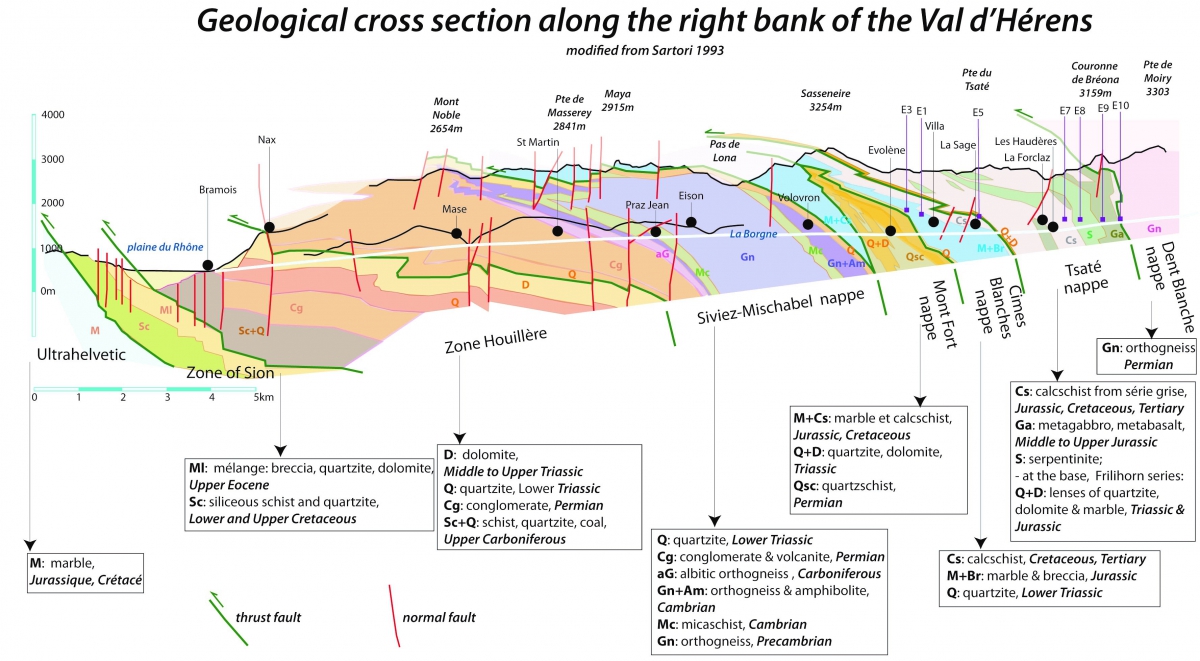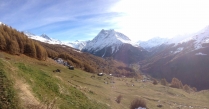Preamble
A new trip is also proposed (trip E) in the same region than trip A for its southern part, but it can be made using postal bus starting in Les Haudères, or by bike, or by car with some part by foot. It may also be made in snow shoes in winter.
The description of these field trips refers to the geological introduction, in which basic geological notions are explained together with a general geological history of the Alps.
These field trips consist in an initiation into landscape reading, more particularly to what is found under the relief in front of us. The recent geological relief (a few thousands of years) was produced by the erosion of the glaciers. Supporting this relief, much older rocks are found, they take us for a trip back in time over hundreds of millions of years (Ma).
The problem in the field is to recognise what is related to the recent glaciations and what belongs to the older geological history. Glaciers have moved rocks all over the valleys, erratic blocks were displaced over tens or even hundreds of km, and these blocks are now juxtaposed to rock outcrops. Another problem comes with the landslides, as large blocks can be displaced and juxtaposed to other outcrops of different nature.
The size of the erratic blocks (usually of meter size) allows for distinguishing them from rock outcrops that extends over hundreds of meters. The solution to these problems is found in the determination of the rocks in front of us, mainly if one has a geological map at hand and geological cross-sections that tell us what is supposed to be there. For example, if one is in the Nappe du Tsaté (made of calschists, prasinites and serpentinite) and if a block of gneiss in found in front of us, it is quite obvious that the latter is an erratic block derived from the Dent-Blanche massif.
How to determine the rock types in front of us? it can be a relatively long learning process depending on the rock type, but guidebooks can be bought or websites consulted, such as «objectif roche» found on the address: http://objective-earth.unil.ch/index.php?id=home
Also, the description for each stops of the field trips explains what type(s) of rocks are found there, and the glossary has photos of the main rock types found in the region.

















